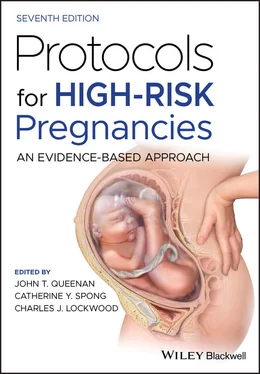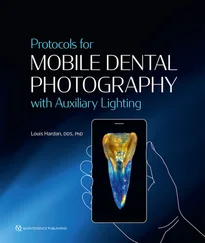10 Tran T, Reeder A, Funke L, Richmond N. Association between smoking cessation interventions during prenatal care and postpartum relapse: results from 2004 to 2008 multi‐state PRAMS data. Matern Child Health J 2013; 17:1269–76.
11 US Department of Health and Human Services Substance Abuse and Mental Health Services Administration Center for Behavioral Health Statistics and Quality. National Survey on Drug Use and Health, 2013. Inter‐University Consortium for Political and Social Research (ICPSR) [distributor].
12 US Department of Health and Human Services. The Health Consequences of Smoking: 50 Years of Progress. A Report of the Surgeon General. Atlanta: US Department of Health and Human Services, Centers for Disease Control and Prevention, National Center for Chronic Disease Prevention and Health Promotion, Office on Smoking and Health, 2014.
13 World Health Organization. WHO Recommendations for the Prevention and Management of Tobacco Use and Second‐Hand Smoke Exposure in Pregnancy. Geneva: World Health Organization, 2013.
PROTOCOL 3 Opioid Use, Misuse, and Addiction in Pregnancy and Postpartum
Mishka Terplan
Friends Research Institute, Adjunct Faculty, Clinical Consultation Center, University of California, San Francisco, CA, USA
Opioids have been part of human culture and healing for millennia. Initially cultivated and distributed throughout the ancient world, opioids are described in Sumerian, Egyptian, Greek, Islamic, and Chinese medical treatises. Whereas opioid use is ancient, problematic use and, specifically, addiction are more modern phenomena. The first opioid crisis, which dates to the latter half of the 18th century, was iatrogenic in origin. This was an epidemic overwhelmingly of women, who had initially been exposed to opioids through a prescription for the treatment of “female ailments.”
The current opioid crisis in the US is arguably the most severe in history and, like the first, features a large proportion of women. Overdose deaths have become one of the leading causes of mortality and, along with hepatitis C and suicide, have contributed to a decrease in life expectancy especially among white, middle‐aged Americans. The current crisis consists of three related phases. The first began with a marked increase in opioid prescribing starting in the mid‐1990s and peaked in 2010. The second was driven by illicit heroin distribution while the third phase began in 2016 powered by fentanyl and other illicitly manufactured synthetic opioids. Opioid‐related drug deaths may have plateaued nationally in 2019, but a fourth wave of stimulant‐related mortality (both amphetamine and cocaine) is now emerging.
The current crisis has changed the demographics of substance use and addiction. Whereas less than 20% of people who used heroin in the 1970s were women, today roughly 50% are women. Although more men have addiction than women, for opioid use disorder at least half of people presenting for treatment are female.
Opioid use, misuse, and addiction have increased in pregnancy and postpartum, in parallel with the overall crisis. Rates of opioid use disorder assessed at the time of delivery more than quadrupled between 1999 and 2014, as have rates of neonatal abstinence syndrome (NAS), and, in many states, overdose is the leading cause of maternal death.
Opioids are a class of substances which bind to the opioid receptor. They are commonly utilized in anesthesia, prescribed as analgesics, employed for the treatment of opioid use disorder, and available in illicit economies (heroin and both diverted and counterfeit pills). Although data support the use of opioids for acute pain, their effectiveness for chronic pain management is limited. Details regarding opioid prescribing for pain are beyond the scope of this Protocol though general principles of care include (i) treating pain with combination therapies (both opioid and nonopioid pharmaceuticals and nonpharmacologic management), and (ii) when opioids must be used, employ the lowest dose for the shortest duration.
Risks associated with opioid use include (i) tolerance (dose increase needed to maintain effect), (ii) dependence (withdrawal symptoms upon cessation), and (iii) overdose‐related morbidity and mortality. The risk of overdose is related not just to the opioid dose, but also to the concomitant use of other central nervous system (CNS) depressants (both prescribed and not prescribed) such as benzodiazepines, zolpidem and other sleep aids and alcohol. Therefore, individuals prescribed opioids for both chronic pain and addiction treatment should be co‐prescribed naloxone and instructed in its use. Naloxone is an opioid antagonist, most often administered via an intranasal route, which reverses opioid overdose.
A third of individuals prescribed opioids for chronic pain report misuse. Symptoms of misuse can include taking extra medication because of the effect, running out of prescriptions early, and crushing and snorting or injecting the medication. At most, 12% of individuals prescribed opioids for chronic pain develop an opioid use disorder. Opioid misuse can be a risk factor for the development of opioid addiction. Validated instruments, such as the Opioid Risk Tool, should be utilized when initiating opioid prescribing to assess and communicate misuse and addiction risk to patients.
Pregnancy is an opportune time to assess behavioral health conditions in general, and substance use and addiction in particular. Universal screening with a validated instrument is recommended as a routine part of prenatal care. The following instruments have been studied in a comparative study design: the Substance Use Risk Profile‐Pregnancy (SURP‐P), CRAFFT, 5Ps (parents, peers, partner, pregnancy, past), Wayne Indirect Drug Use Screener (WIDUS) and the National Institute on Drug Abuse (NIDA) Quick Screen. All perform with similar efficacy though none has both high sensitivity and high specificity. Screening should occur at the first prenatal care visit, every trimester, and, especially, postpartum. Urine drug testing is not a substitute for screening. Urine drug tests, especially point‐of‐care tests, do not capture certain substances (such as alcohol, nicotine and many synthetic opioids including fentanyl) and are plagued by false‐positive results due to medications commonly utilized in pregnancy and during labor and delivery.
Most people who use substances quit or cut back during pregnancy. However, some people cannot, most likely because they have an addiction. While it is very rare for a woman to develop an addiction during pregnancy, some people with addiction get pregnant and may initially present for care during pregnancy. Opioid addiction (also termed opioid use disorder) is a chronic and treatable disease. Symptoms of addiction include inordinate amount of time spent craving, obtaining, using, and recovering from a substance; compulsive use; use that interferes with school, job, family, and other aspects of social life; and continued use despite harms to self and others. Opioid addiction should be diagnosed with the framework detailed in the DSM‐5.
Individuals with addiction need treatment. The core component of opioid addiction treatment is medication. There are three FDA‐approved medications for opioid use disorder: methadone, buprenorphine, and naltrexone. Evidence for naltrexone in pregnancy is limited and therefore it is not recommended at this time. Methadone, a full opioid agonist, has been used in pregnancy since the 1960s and buprenorphine has been available in the US since 2002. Randomized trial and systematic review data demonstrate that both are safe and effective. Methadone must be dispensed from an opioid treatment program (OTP) and carries a small risk of overdose primarily during the initial phase of treatment. Buprenorphine can be dispensed from an OTP but is more often prescribed by providers who have obtained an “X waiver” from the Drug Enforcement Administration (DEA). Buprenorphine is a partial agonist and can precipitate withdrawal if given to a patient who is not already in withdrawal. Neonatal abstinence syndrome (NAS) is a possible side effect of both methadone and buprenorphine, although the severity and duration of NAS are less with buprenorphine.
Читать дальше












